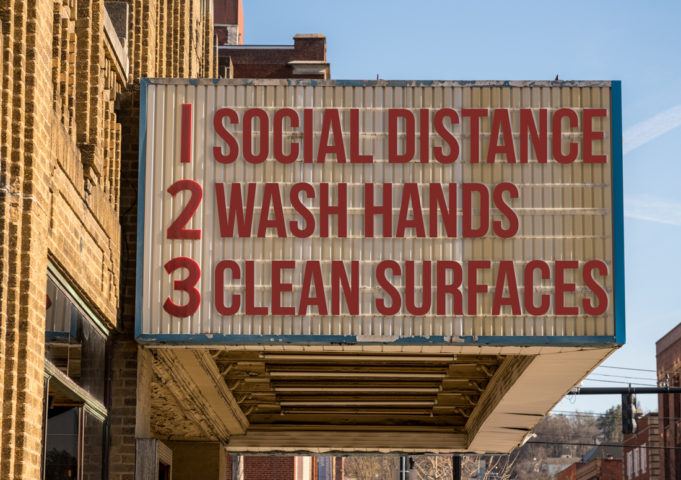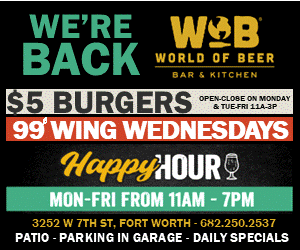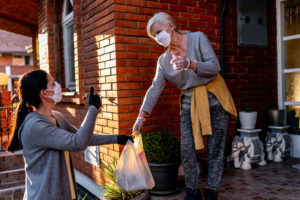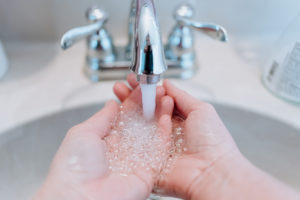For most of us who have paid close attention to the progress of the coronavirus pandemic over the last three months, talking to our families about how to stay safe and healthy can be difficult. People don’t want to hear that the way they’ve lived their lives up to now is no longer the way they need to live their lives for the next couple of years. Which is completely understandable. But if we love them, we have to do our best to give them the information they need to protect themselves from the virus. Without getting into unproductive and pointless fights with them over it.
I’m happy to report that my own mother has been doing a good job of following social distancing edicts for over two weeks to protect both herself and our society, but she’s on the phone daily with relatives around my area (Boston, Massachusetts) who aren’t taking the coronavirus threat quite as seriously as they should. I’ve taken to giving little updates — via a social media group I created for the purpose — on the science of the COVID-19 pandemic to over a dozen people in my extended family. Just the facts in a judgment-free tone. And I recommend that everyone who is following the situation closely do the same with their families. Folks can take or leave the information, of course, but at least they have it.
For example, yesterday, I sent out the following note.
“So this time out, I thought I would address an idea that’s out there that the coronavirus is no worse than influenza — which, in a typical year, kills 34,000-64,000 people in the U.S. Bad enough, but COVID-19 is expected to be far worse because no one on Earth has immunity to it — unless they get it and live. Yet many more people won’t live if they get it because no one has immunity to it, which is why the death rate from the coronavirus is expected to be about 1% of those who get it. Top epidemiologists are saying that we can therefore expect around 2.2 million deaths in the U.S. over the next 18-24 months until the virus is brought under control or burns out — mostly older people but also too many younger people — if we don’t continue the kinds of social distancing measures we’ve started across the country. And even if we do, we’ll still see far more deaths than a typical influenza season. One other important thing to understand is scientists haven’t yet developed a way to figure out who will get the mild form of COVID-19 and who will get the severe form. This is why it’s very important to stay a minimum of six feet away from anyone — including children — who you are not already living with. Every person you interact closely with that isn’t already living with you is the equivalent of putting a loaded gun to your head and the heads of your immediate family — if they are sick and infect you, you won’t know if you will get the mild form of the coronavirus or the severe form of the coronavirus until you are sick yourself. This situation is unprecedented in modern times, so I encourage you all to take it seriously. It will be over a year until we will have a widely available vaccine — and until we have that and new treatments that might be available by next fall, we have no protection from the coronavirus.”
Today, I decided it would be worth making a COVID-19 pandemic Q&A for my extended family, based on weeks of reading the best information I can find as a working journalist, to cover more ground than I can in shorter notes. For the sake of space, I’ll skip most issues I addressed above, but those of you who want to run my Q&A by your own families should feel free to add that info back in. Good luck talking to your people if you decide to give it a shot. I think you’ll find it’s worth the effort.
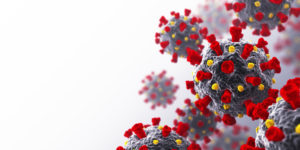
What is COVID-19?
It’s a virus like influenza, but it spreads faster. And it’s new, so no one on Earth has immunity to it until they’ve gotten infected and recovered. About 80% will get the mild version of the coronavirus infection. And about 20% will get the severe version — many of whom will have to be hospitalized, while a number of those will need a ventilator to survive. Of that last group, some will die. The only way to reduce the number of severe cases and deaths long enough for scientists to develop a vaccine to protect us is by social distancing.
What is social distancing?
Also known as physical distancing, it’s a combination of practices that include staying home as much as possible and keeping at least 6 feet apart from people you don’t live with when you’re out of the house to avoid spreading the coronavirus to other people — or catching it yourself.
How is the coronavirus spread?
By breathing air within 6 feet of an infected person — particularly breathing air within 6 feet of an infected person right after they cough or sneeze without covering their face with their elbow or a tissue. The virus can live
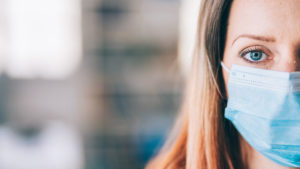
in droplets people have coughed, sneezed, or breathed into the air for up to about three hours, according to some scientific studies, so it’s potentially more dangerous to breathe air in an enclosed space (like an apartment building hallway or a store or market) for at least an hour after an infected person has passed. The coronavirus may also be spread by touching a surface that an infected person coughed or sneezed on and then touching your hands to your face — particularly your eyes, nose, or mouth. The virus can live on hard surfaces like metal (except for copper) and plastics for up to a few days. And on surfaces like cardboard for about a day.
How long do I have to breathe infected air to get the virus?
Some scientists say at least 10 minutes in an enclosed space, but others say that even brief periods close to an infected person in any setting could be risky.
How can I tell if someone is infected with the coronavirus?
You can’t always tell by looking at someone. It takes five to six days for infected people to show symptoms. But some take up to 14 days. And at least one scientific study indicated that it could take even longer for a smaller group of people.
Can people spread the coronavirus when they are infected but don’t show symptoms?
Yes, in fact some people spread more during the early phase of their infection than later.
What are symptoms of COVID-19?
Early in the pandemic, it was thought that a dry cough and a fever over 100 degrees were the main symptoms, but as the virus has spread worldwide, many other symptoms have appeared — diarrhea and abdominal pain have been showing up in significant numbers of patients in New York City as first symptoms.
How long do I have to do social distancing?
Virologists, epidemiologists, and other scientists aren’t sure, but it’s expected that we all need to practice social distancing for at least two or three months to start. Then the experts may tell politicians it’s OK to relax social distancing for another month or so until the coronavirus cases start increasing again. Then we may have to keep going like that — two or three months on and one or so months off — until a vaccine is developed that can protect people from the virus.
How long is it going to take to develop a safe vaccine and start getting everyone a dose?
For the general population, experts are saying 12 to 18 months. Front line health providers may start getting a vaccine by next fall. And people with preexisting conditions that make infection with the coronavirus more dangerous may start getting it by early next year. But these are estimates. It could take longer to develop a vaccine — though it could possibly take less time if there’s some breakthrough but not much less time because safely deploying a vaccine takes human testing and that can’t be rushed.
Can I get COVID-19 from the people I’m living with?
Yes, if any of you became infected before you all started staying home together, then any of you can infect everyone else in your home. Once you’ve been isolating yourselves at home for more than a couple of weeks, then you’re probably OK. However, every time any of you goes anywhere that you can potentially be exposed to infected people, any of you can become infected and bring it back home. And you won’t know until you’ve been isolated at home together for more than a couple of weeks — after each time any of you are exposed to other people.
Can I visit friends and family in person at their homes during social distancing periods?
No, that’s not safe. And won’t be safe until we have a vaccine. You can meet people outside their homes and stay at least 6 feet away from each other. The safest way to stay in touch with people is online via video chat or via a simple phone call.
Can I go to parks and meet other people I’m not living with?
Yes, as long as you can all stay at least 6 feet apart from the people you’re meeting and from everyone else in the park. If the park looks too crowded, you should look for another one.
Can I play contact sports with people I’m not living with?
No, it’s not safe.
Can children get the coronavirus?
Yes, all humans can get the coronavirus and spread it.
Can my children go visit relatives and play with other children during the social distancing periods?
Absolutely not. It won’t be safe for them to do so until we have a vaccine. If they happen to be infected, they can infect whoever they come into close contact with even if they have no visible symptoms. Or the relatives and friends could infect them.
What’s the safest way to get groceries and other supplies?
Delivery. Many supermarkets offer delivery online for a generally reasonable fee.
Should I let delivery people into my home?
No, that’s not safe. Especially if they’re not wearing face masks. You should let delivery people drop supplies right in front of your home. If you need to interact with them to give them a tip or sign a receipt, you should either have one person put down what the other person needs between you both and then back away or do a quick handoff while keeping your distance, then back away.
Should I let anyone into my home?
No, it’s not safe. You should meet anyone who is not living with you already online, by phone, or outside (keeping at least 6 feet between you). Obviously, though, if you have to let someone in, you have to let them in. Just try to wear a mask and keep a distance from people in your home and try to make sure they leave within 10 minutes if at all possible.
Are groceries and supplies safe to handle in my home?
Not necessarily. You don’t know who has been around groceries and supplies before they got to you. If anyone coughed or sneezed on them before you get them, there could be live coronavirus on them. When you’re putting away your groceries and supplies, try to wipe down bottles and cans made of plastic or metal with disinfectant or soap and water on a paper towel. Take off cardboard outer boxes when possible and throw them away. In general, when you’re handling anything you bought outside, for days afterward be sure to wash your hands before handling anything else or touching your face. And clean your kitchen and food storage areas regularly with disinfectant or soap and water. Any fruits, vegetables, meat, and fish that weren’t packaged at a factory are inherently less safe, because shoppers and market staff can cough or sneeze on them before you get them, so plan to cook everything but fruits and vegetables that you can peel. Bananas, oranges, carrots, and other fruits and vegetables with peels should be safe to handle and eat after peeled, but be sure to wash your hands after peeling them and rinse them off before using.
Can I get the coronavirus from eating food?
Supposedly not, but the absence of scientific proof doesn’t mean that studies have been done to see if every kind of cooked and raw food is safe to eat if an infected person has coughed or sneezed on them. The thinking is that any virus you eat or drink will be killed by the acid in your stomach, but if any virus gets through your stomach, there are receptors in your intestines that the coronavirus can use to infect you. Which is unlikely but still a possibility. There’s also a contradiction in that scientists tell us to keep our hands away from our face — and avoid sticking our fingers in our mouths — but then say that food should be safe to eat even if someone has coughed on it.
Should I wear a face mask or other face protection like a scarf or bandana when going outside my home?
Not clear. Again, there are contradictory messages coming from scientists. On the one hand, they say that you shouldn’t be within 6 feet of infected people if you can avoid it. On the other, they say that masks aren’t necessary unless you’re a healthcare provider working with infected people. Some scientists are also concerned about coronavirus droplets from infected people remaining in air they walked through in enclosed spaces like buildings for up to three hours after they pass — with the time of highest risk being the first hour. I think people who live in apartments (when they’re leaving their apartment and exiting their building) and anyone going shopping in markets should definitely wear some kind of face covering. Particularly in elevators. Always take the stairs if you can. Also keep in mind that while regular surgical or dust masks are thought to provide more protection than going without any face protection, scarves and bandanas offer less protection. The best protection is provided by N95 masks, but given the bad shortages of such masks and of respirator systems that don’t use outside air at all, most people will never have access to them. And, regardless, it’s most important that front line medical workers and other workers like food market employees who have to deal with potentially infected and definitely infected people have access to the best protection first and always. If our medical providers and food handlers get sick, it’s worse for all of us.
Is it safe to go into stores and markets?
Not really. You will encounter more people in smaller enclosed spaces when you do. If you wear some kind of face covering and gloves, then wash your hands or use hand sanitizer after you leave the store. That will help. But it’s not enough protection to really make you safe. Delivery is better. But if you have to go to stores and markets, then protect yourself as best you can, minimize your time in those places, and get out as fast as you can. Take a shower when you get home too.
Is it safe to go to work?
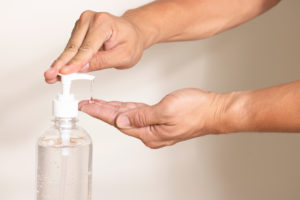
Not really. For the same reasons I mentioned about going into stores and markets. But again, if you have to go, you have to go. You might consider organizing with your fellow workers to demand that your bosses allow you work from home where possible.
Is it safe to use public transportation or rideshares or cabs or carpools?
Not really. For the same reasons I mentioned about going into stores and markets. Driving with anyone other than the people you live with — assuming they’re not already infected — isn’t safe.
Can I bring my friends and family groceries and other supplies?
Yes, with the caveats already mentioned taken as given. And assuming that you drop the supplies outside your friend’s and family’s homes and stay 6 feet away from them at all times. Do not enter their homes.
Does it matter where the coronavirus came from?
No, it really doesn’t. New viruses arise all the time, all over the planet, including here in the U.S. Once they do, it’s up to all nations to stop them from spreading and harming the entire population. If nations fail to do that, as has been the case with the coronavirus pandemic, then we all need to band together to find a safe vaccine and get it to everyone as fast as possible. Until then, we need to help each other get through the crisis as one unified species. Fighting over where the virus started is worse than pointless. It’s dangerous because it takes time and resources away from stopping something that’s killing lots of fellow humans. And could kill any of us.
Jason Pramas is executive director of the Boston Institute for Nonprofit Journalism and executive editor and associate publisher of DigBoston. A version of this story originally appeared in BINJ’s media outlets.



